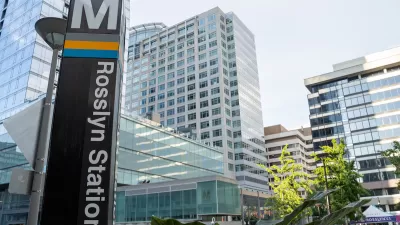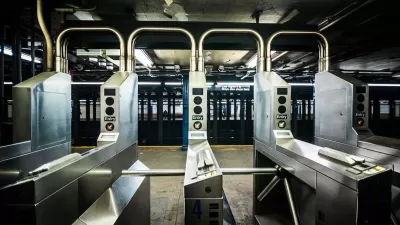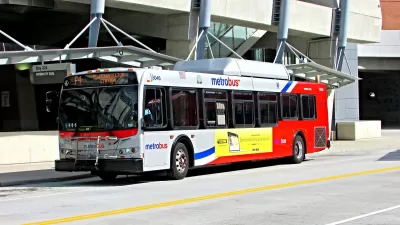Without additional funding, the region’s transit agency could be forced to reverse key changes that have improved service in the past year.

The major improvements experienced by Washington, D.C.-area transit riders could come to and end next year, according to a TransitCenter blog post. “This week, WMATA leaders released an outline of doomsday funding scenarios, which include severe service cuts that could eliminate bus routes, reduce rail hours, create longer waits between trains, and close down stations.”
The blog post outlines some of the most significant improvements in the last year, noting that “Metro will have 58 percent more trains in service on weekdays compared to July 2022 and provide 73 percent more train trips.” The agency also has several other improvements on deck, such as all-door boarding, which begins this fall.
“WMATA is an essential part of the DC region’s economy, and service cuts of this magnitude would be devastating for the mobility of the region,” the post continues. But “As of September, WMATA’s budget gap totals $750 million. If the agency isn’t able to close the gap by next summer, it will lose all of the progress that’s been made and will have to start initiating hiring freezes and layoffs that would dramatically reduce systemwide operating hours and cause increased wait times for passengers.”
FULL STORY: On the Brink: Will WMATA’s Progress Be Erased by 2024?

Alabama: Trump Terminates Settlements for Black Communities Harmed By Raw Sewage
Trump deemed the landmark civil rights agreement “illegal DEI and environmental justice policy.”

Planetizen Federal Action Tracker
A weekly monitor of how Trump’s orders and actions are impacting planners and planning in America.

Why Should We Subsidize Public Transportation?
Many public transit agencies face financial stress due to rising costs, declining fare revenue, and declining subsidies. Transit advocates must provide a strong business case for increasing public transit funding.

Understanding Road Diets
An explainer from Momentum highlights the advantages of reducing vehicle lanes in favor of more bike, transit, and pedestrian infrastructure.

New California Law Regulates Warehouse Pollution
A new law tightens building and emissions regulations for large distribution warehouses to mitigate air pollution and traffic in surrounding communities.

Phoenix Announces Opening Date for Light Rail Extension
The South Central extension will connect South Phoenix to downtown and other major hubs starting on June 7.
Urban Design for Planners 1: Software Tools
This six-course series explores essential urban design concepts using open source software and equips planners with the tools they need to participate fully in the urban design process.
Planning for Universal Design
Learn the tools for implementing Universal Design in planning regulations.
Caltrans
Smith Gee Studio
Institute for Housing and Urban Development Studies (IHS)
City of Grandview
Harvard GSD Executive Education
Toledo-Lucas County Plan Commissions
Salt Lake City
NYU Wagner Graduate School of Public Service





























